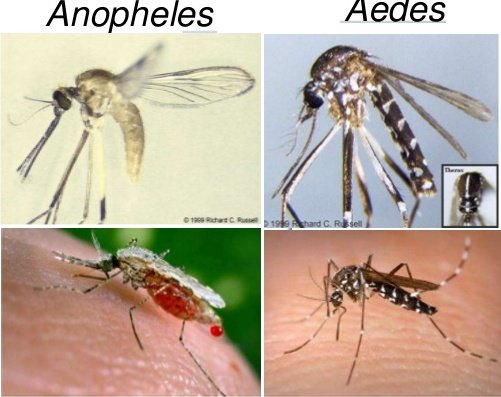
According to a famous saying of Winston Churchill, “However, beautiful the strategy, you should occasionally look at the results”. This quote can be applied to our programs and strategies for the control of Dengue Virus at provincial and national levels. If we look at the recent history of Dengue Virus in Pakistan, in November, 2010, more than 21,204 people were diagnosed with dengue fever and the severity of epidemic was greatest in Lahore. Despite the efforts of the government of Pakistan, more than 14,000 people were infected and nearly 300 died of dengue fever, only in summer, 2011. International response was encouraging because Government of Sri Lanka gave medicines and staff of 12 doctors to the Punjab province. The Indonesian government dispatched a team of 20 people to assist the Pakistani authorities. The World Health Organization (WHO) also provided technical guidance and support for provincial and territorial dengue monitoring committees. The International Anti-Dengue Day is observed on June 15, every year and the idea was first agreed upon in 2010 with the first event held in Jakarta, Indonesia in 2011.
Despite all these efforts, once again the end of the year 2015 is not going in favour of these efforts because continuous reports are being received about the infections and deaths caused by dengue fever from different parts of Pakistan. Recently, a dengue affected woman died in a hospital in Lahore, while in Multan, the number of infected patients have exceeded 400 and many more are being tested as positive according to the doctors. At the start of November, 2015, as many as 190 dengue fever cases had been recorded from the Sindh province, out of which 187 were reported from the Karachi city. The situation of Rawalpindi is the worst because more than 3000 cases have been recorded and the death toll is increasing with each coming day. A technical session was organized by the Ministry of Health at the National Institute of Health in collaboration with Pakistan Field Epidemiology and Laboratory Training Program. During this technical session, Dr. Robert Fontaine from the US Center for Disease Control, Atlanta, expressed his views as “Reduction of dengue virus transmission depends primarily on control of the mosquito vectors and interruption of human-vector contact. Countries such as Pakistan, which are endemic for dengue, must implement national preparedness plans that incorporate early warning systems, as well as outbreak, vector and environmental surveillance. The establishment of laboratory diagnostic support and established protocols for clinical case management are essential components of such preparedness.”
Dengue fever, also known as the “break bone fever” is a mosquito borne tropical disease caused by the dengue virus. The WHO counts dengue as one of the seventeen neglected tropical diseases. The first record of the probable dengue fever is in the Chinese Medical Encyclopedia from the Jin Dynasty (265-420 AD) which referred to a “Water Poison” associated with flying insects. There have been descriptions of epidemics from the seventeenth century but the earliest reports of dengue epidemics are from 1779 and 1780. Dengue hemorrhagic fever and dengue shock syndrome were first noted in Central and South America in 1981. Dengue is common in more than 110 countries and it infects 50 to 528 million people worldwide a year, causing 25,000 deaths. For the decade of 2000s, 12 countries in Southeast Asia were estimated to have about three million infections and 6,000 deaths annually, which makes it one of the most common vector-borne diseases worldwide. The increase in number of infections is believed to be due to a combination of urbanization, population growth, increased international travel and global warming. Most cases occur in tropical areas of the world with the greatest risk occurring in the Indian Subcontinent, Southeast Asia, Southern China, Taiwan, the Pacific Island, the Caribbean, Mexico and Central and South America.
Symptoms which usually begin four to six days after infection and last for up to ten days may include sudden high fever, severe headache, pain behind the eyes, severe joint and muscle pain, nausea, vomiting, fatigue, mild bleeding (nose bleed and bleeding gums) and skin rash which appear two to five days after the onset of fever. However, serious problems can develop, like dengue hemorrhagic fever which is characterized by high fever, damage to blood and lymph vessels, bleeding from nose and gums, enlargement of liver and failure of circulatory system. Another complication is dengue shock syndrome which may cause massive bleeding, shock and death. In recent studies, it has been shown that flavi viruses, particularly dengue virus have the ability to inhibit innate immune response during the infection.
Currently, no vaccine is available but several vaccines are under development by public and private researchers. Developing a vaccine against dengue virus is challenging because the vaccine must immunize against all serotypes of dengue virus that can cause the disease.Apart from the attempts to control the spread of Aedes mosquito and to develop a vaccine, there are ongoing efforts to develop antiviral drugs that would be used t treat the attacks of dengue virus and prevent severe complications. Currently Paracetamol is used for fever and discomfort while NSAIDs like Ibuprofen and Aspirin are avoided because they might aggravate the risk of bleeding. The best way is to prevent the bite of infected mosquitos, particularly if you are living or travelling to a tropical area. The primary method of controlling A. aegypti is by eliminating its habitats. Generalized spraying of organophosphates and pyrethroids is not thought to be effective while reducing open collection of water sources is the preferred method. However, these methods appear not to be sufficiently effective, as the frequency of outbreaks appears to be increasing in most of the areas probably due to urbanization.
The writers are associated with the University of Agriculture Faisalabad, Pakistan.